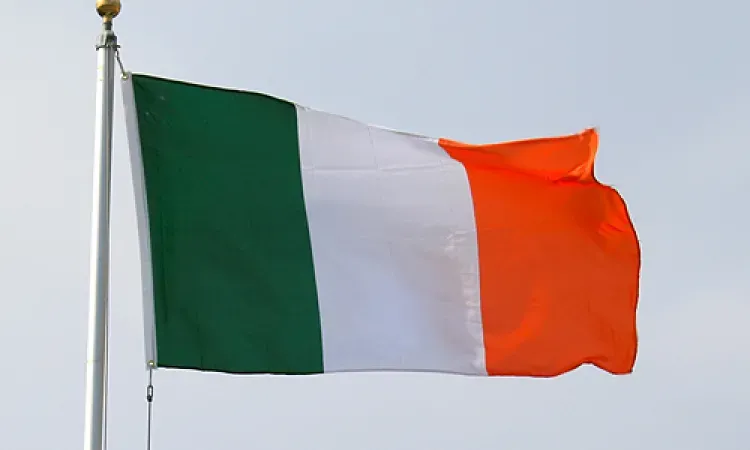
CNA Newsroom, Aug 9, 2022 / 09:51 am (CNA).
Pro-life campaigners and advocates for religious freedom in Ireland have expressed dismay following the news that the Irish Government intends to introduce fines and prison sentences for people who pray, hold signs, or try to persuade women not to have abortions while they are within the vicinity of an abortion clinic.
The proposed legislation would mean that individuals would not be allowed to express pro-life views within 100m of abortion clinics while also prohibiting silent prayer, the holding of placards, and any peaceful offers of alternatives to abortion.
Pro-life activists have reacted by highlighting that there is no evidence that pro-life vigils near abortion clinics in Ireland are dangerous or unlawful.
In an August 4 statement, Megan Ní Scealláin of the Life Institute said: “Garda Commissioner Drew Harris wrote to the Minister for Health [Stephen Donnelly] to clearly state that there was ‘no evidence’ to suggest that pro-life protests at any centers were abusive or threatening. He confirmed that the vigils were, in fact, peaceful and lawful”.
“Of course, Stephen Donnelly knows this, and he is choosing to ignore the advice of Gardai to do the bidding of campaign groups and to punch down at pro-life activists who he knows are breaking no laws”, she said.
“In fact, the Garda Commissioner also stated that if any laws were to be broken existing laws were sufficient to deal with that”.
The Irish Government’s position differs to that of the UK Government’s which maintains that there are sufficient laws already in place to protect women seeking an abortion from harassment and intimidation.
Following the unveiling of the Irish Government’s proposals, David Quinn, Director of the Iona Institute, a Christian advocacy group, questioned the constitutionality of the Government’s controversial plans.
He told Catholic News Agency on August 9: “Assuming the law goes through, it will be one of the most restrictive in the whole of Europe because other countries have more respect for the right to protest and consider laws like this to be disproportionate. We already have laws in Ireland against intimidation or harassment and our Garda Commissioner has said so in the context of calls for these buffer zones. But the Government is pressing on anyway, egged on by most opposition parties and pro-abortion lobby groups.
“Ireland has gone from being an extremely pro-life country to the opposite end of the spectrum in just a few short years. Banning even pro-life prayer vigils within 100m of places that conduct or facilitate abortion shows how badly we have changed. If the law is as restrictive as promised, it may actually be unconstitutional. The president has the power to refer it to the Supreme Court when it is ready for him to sign in the months to come and he ought do so’.”
Meanwhile, solicitor and prominent pro-life campaigner, Cora Sherlock said that the proposal should concern everyone, whatever their views on abortion. She said: “This proposal sets a very worrying precedent, and it should be of concern regardless of your view on abortion. The right to freedom of expression, movement and peaceful assembly and freedom to protest have always been held very highly in Ireland and given high priority in the Irish Constitution. Proposed legislation that would infringe on this should ring alarm bells for everyone.
An August 4 statement from the pro-life group, Right to Life, said that although the Irish Government has yet to decide on the extent of prison time or penalties for those peacefully offering alternatives to abortion, a pro-abortion campaign group, Together for Safety, had drafted a previous version of the bill that demanded a a jail sentence of six months or a €3,000 fine ($3,070).
If you value the news and views Catholic World Report provides, please consider donating to support our efforts. Your contribution will help us continue to make CWR available to all readers worldwide for free, without a subscription. Thank you for your generosity!
Click here for more information on donating to CWR. Click here to sign up for our newsletter.





It’s tragic news but perhaps God will use this for good. Let the population controllers & secularists become “The Man” now. The Irish have a heart for the oppressed & persecuted. This may wake them up.
Like in Britain, the Irish are embracing an atheism that appears to them as reasonable. Imagine the terror the government types must encounter when they see someone silently praying 300 feet from an abortuary and therefore must legislate it away.
The seductive wide road beckons once again.
It’s all about drawing arbitrary lines…why 100 yards? Why not ten, or one thousand yards, or even the national boundaries?
And, instead of a “jail sentence of six months or a €3,000 fine ($3,070),” why not capital punishment, thereby showing full equality (!) with unborn children executed prior to crossing the line of the birth canal?
Or, why not the line between two of the neck vertebrae, as was so logical under the guillotine during the Reign of Terror? The proposed penalties are as arbitrary as the line on the public sidewalk.